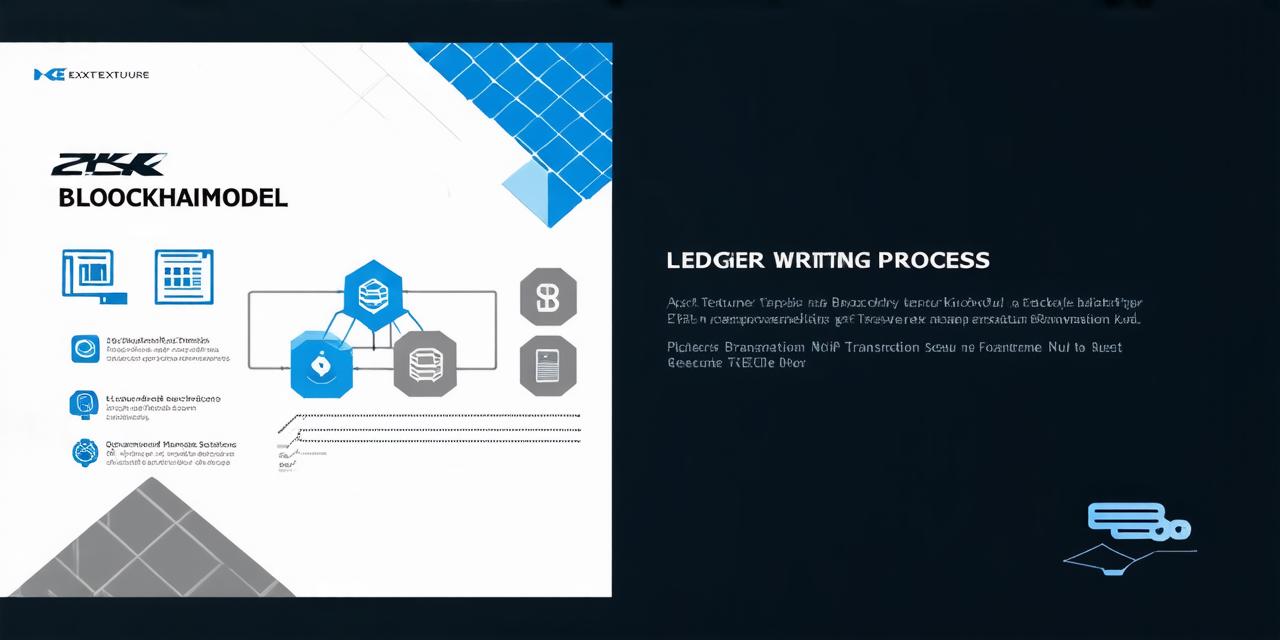The Problem of Writing Data to Blockchain: An In-Depth Look at Different Models
Blockchain technology is rapidly transforming various industries, from finance and supply chain management to healthcare and voting systems. However, one of the significant challenges faced by blockchain developers is writing data to a blockchain. This process involves ensuring that data is secure, transparent, immutable, and accessible to all participants on the network.
Introduction
Before diving into the different models, it’s important to understand the basics of blockchain technology. A blockchain is a decentralized ledger that records transactions across a network of computers. Each block in a blockchain contains a record of multiple transactions, and once a block is written, it cannot be changed or deleted. This immutability ensures that data stored on a blockchain is trustworthy and secure.
The Importance of Writing Data to Blockchain
Writing data to a blockchain is crucial for various reasons. Firstly, it provides transparency and security for all participants on the network. Each transaction is recorded in a public ledger that can be accessed by anyone, ensuring that all parties have access to the same information. Secondly, writing data to a blockchain ensures that data is immutable, meaning once it’s written, it cannot be changed or deleted. This property makes blockchains ideal for applications where data integrity and security are of utmost importance, such as finance and supply chain management.
Different Models Describing How Data is Written to a Blockchain
There are several models used to describe how data is written to a blockchain. These include the following:
The Merkle Tree Model
The Merkle tree model is a hierarchical data structure that allows for efficient storage and retrieval of data on a blockchain. In this model, data is organized into layers, with each layer containing sub-layers. Each layer is represented by a hash function that creates a unique identifier for the data stored in that layer. This identifier is used to link the layers together, creating a tree-like structure.
The Merkle tree model has several advantages. Firstly, it allows for efficient storage and retrieval of data on a blockchain. Secondly, it ensures that data stored on the blockchain is secure and immutable. However, one disadvantage of this model is that it can be computationally expensive to update or delete data once it’s written on the blockchain.
The Directed Acyclic Graph (DAG) Model
The directed acyclic graph (DAG) model is a data structure used to store and process data on a blockchain. In this model, data is organized into blocks that are linked together in a linear fashion, with each block containing sub-blocks. Each block contains a hash function that creates a unique identifier for the data stored in that block.
The DAG model has several advantages. Firstly, it allows for efficient storage and retrieval of data on a blockchain. Secondly, it ensures that data stored on the blockchain is secure and immutable. However, one disadvantage of this model is that it can be computationally expensive to update or delete data once it’s written on the blockchain.

The Consensus Model
The consensus model is a protocol used to ensure that all participants on a blockchain network agree on the state of the ledger. In this model, data is written to the blockchain only after it has been verified and agreed upon by the majority of participants on the network. This process ensures that data stored on the blockchain is secure, transparent, and immutable.
The consensus model has several advantages. Firstly, it ensures that all parties on a blockchain network agree on the state of the ledger. Secondly, it ensures that data stored on the blockchain is secure, transparent, and immutable. However, one disadvantage of this model is that it can be computationally expensive to achieve consensus, especially for large networks with a high volume of transactions.
The Reputation-Based Model
The reputation-based model is a protocol used to ensure that data stored on a blockchain is trustworthy and reliable. In this model, participants on the network are given a reputation score based on their behavior and actions on the network. Data is only written to the blockchain if it comes from a participant with a high reputation score.
The reputation-based model has several advantages. Firstly, it ensures that data stored on the blockchain is trustworthy and reliable. Secondly, it incentivizes good behavior on the network, as participants with a high reputation score are more likely to have their data written to the blockchain. However, one disadvantage of this model is that it can be challenging to assign reputation scores accurately, especially for new participants on the network.
Conclusion
In conclusion, writing data to a blockchain is crucial for ensuring transparency, security, and immutability of data stored on the network. Several models exist to describe how data is written to a blockchain, including the Merkle tree model, directed acyclic graph (DAG) model, consensus model, and reputation-based model. Each model has its strengths and weaknesses, and developers must carefully consider which model is best suited for their specific application. By choosing the right model, blockchain developers can ensure that data stored on a blockchain is secure, trustworthy, and reliable.
